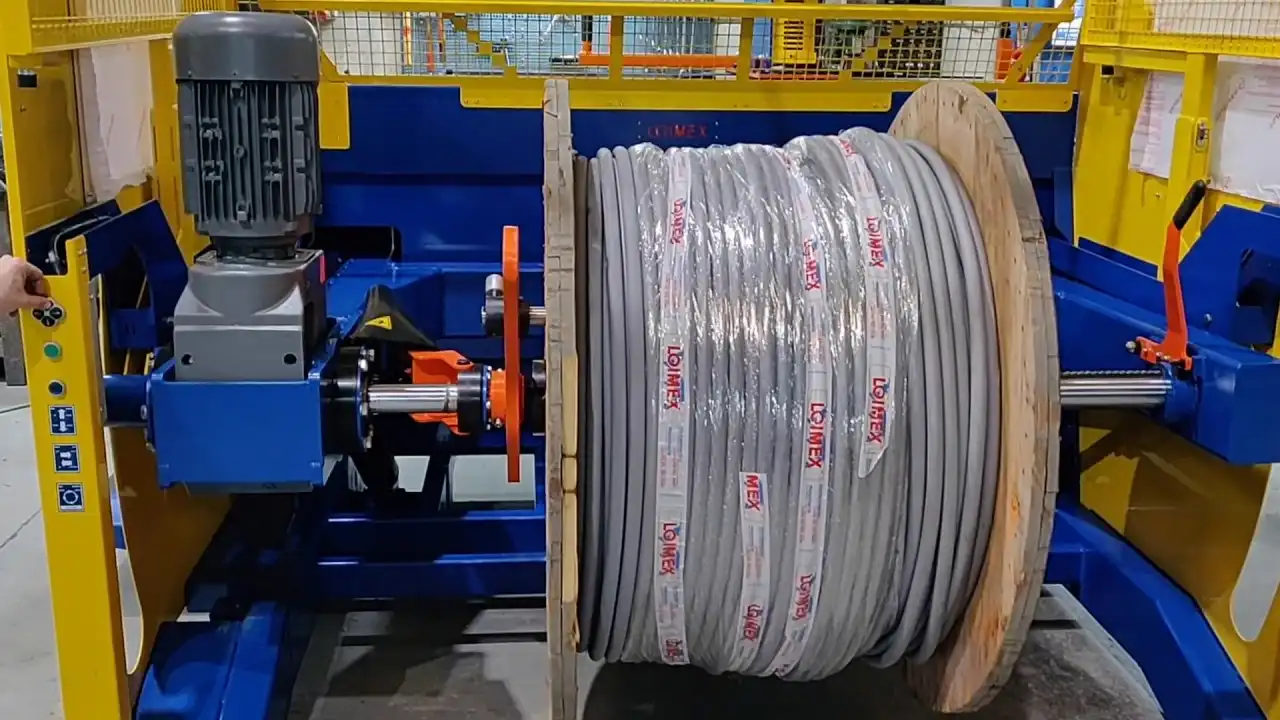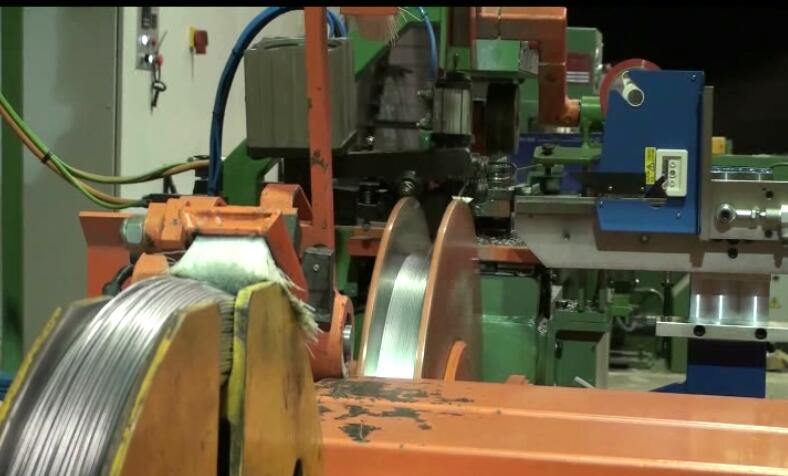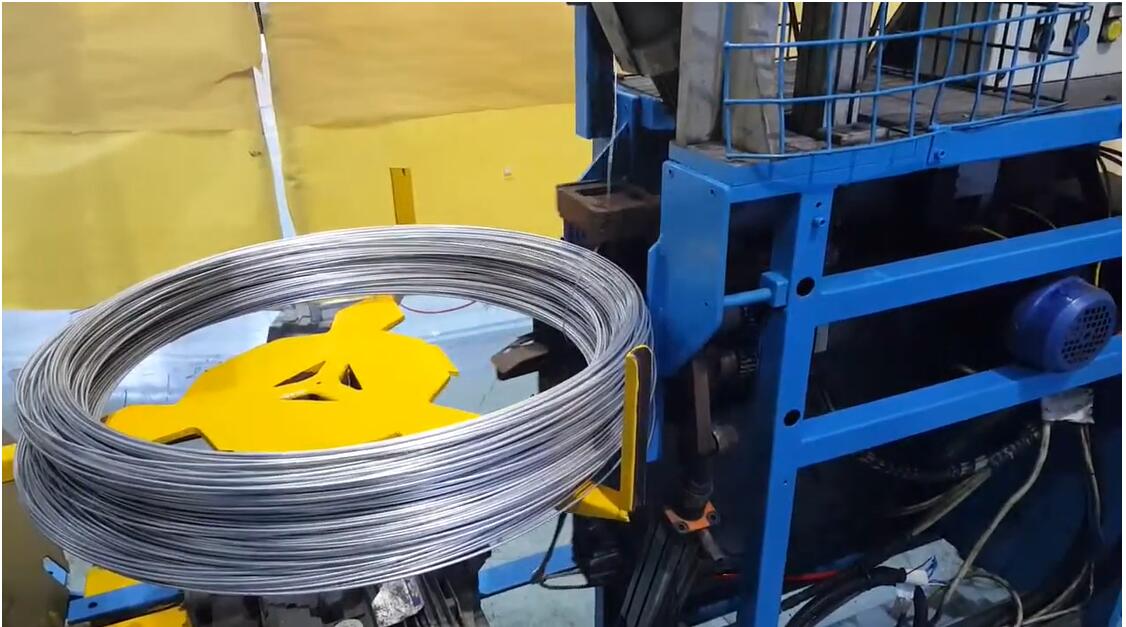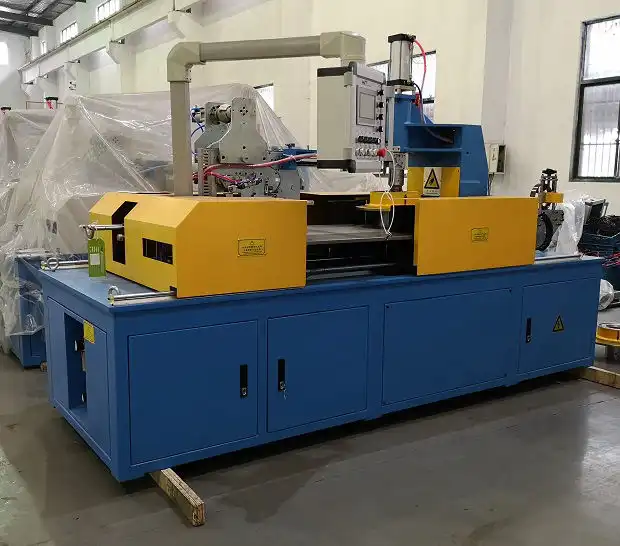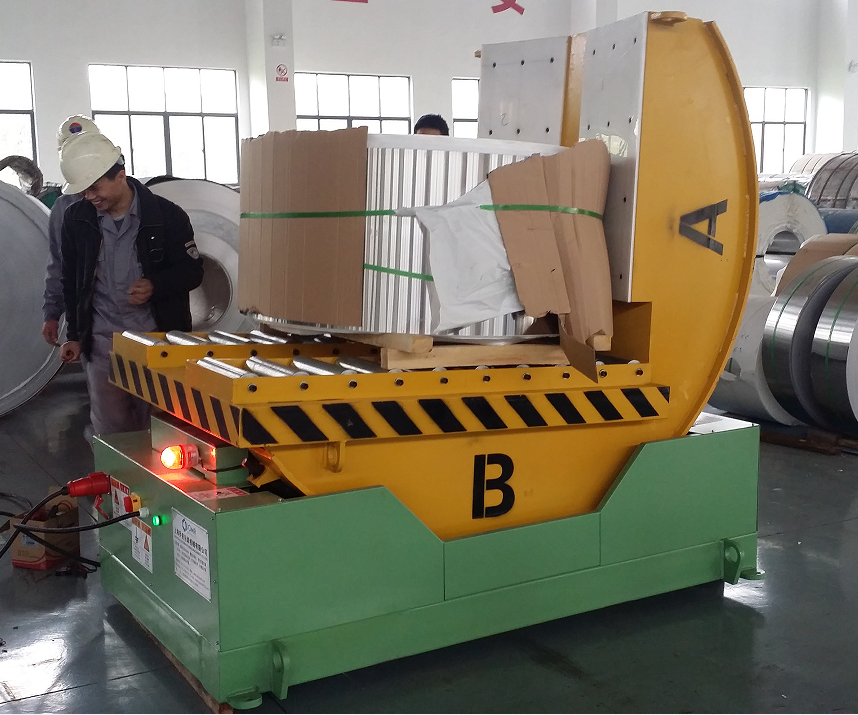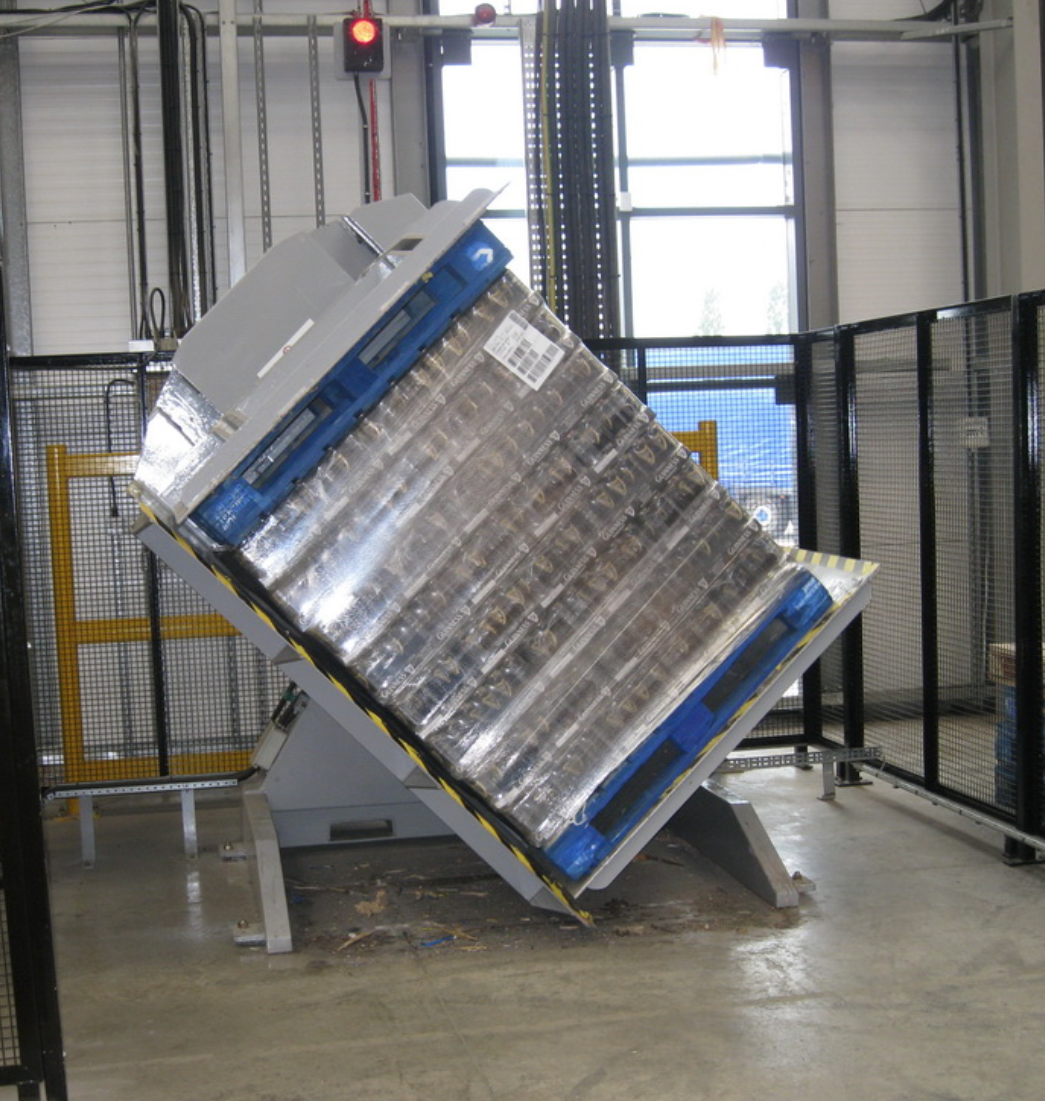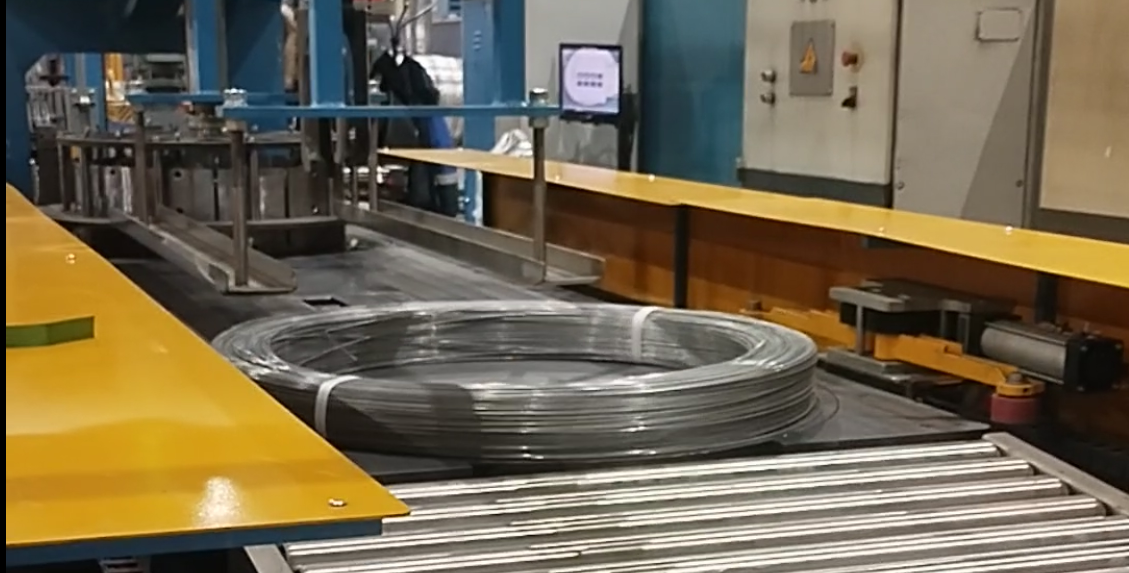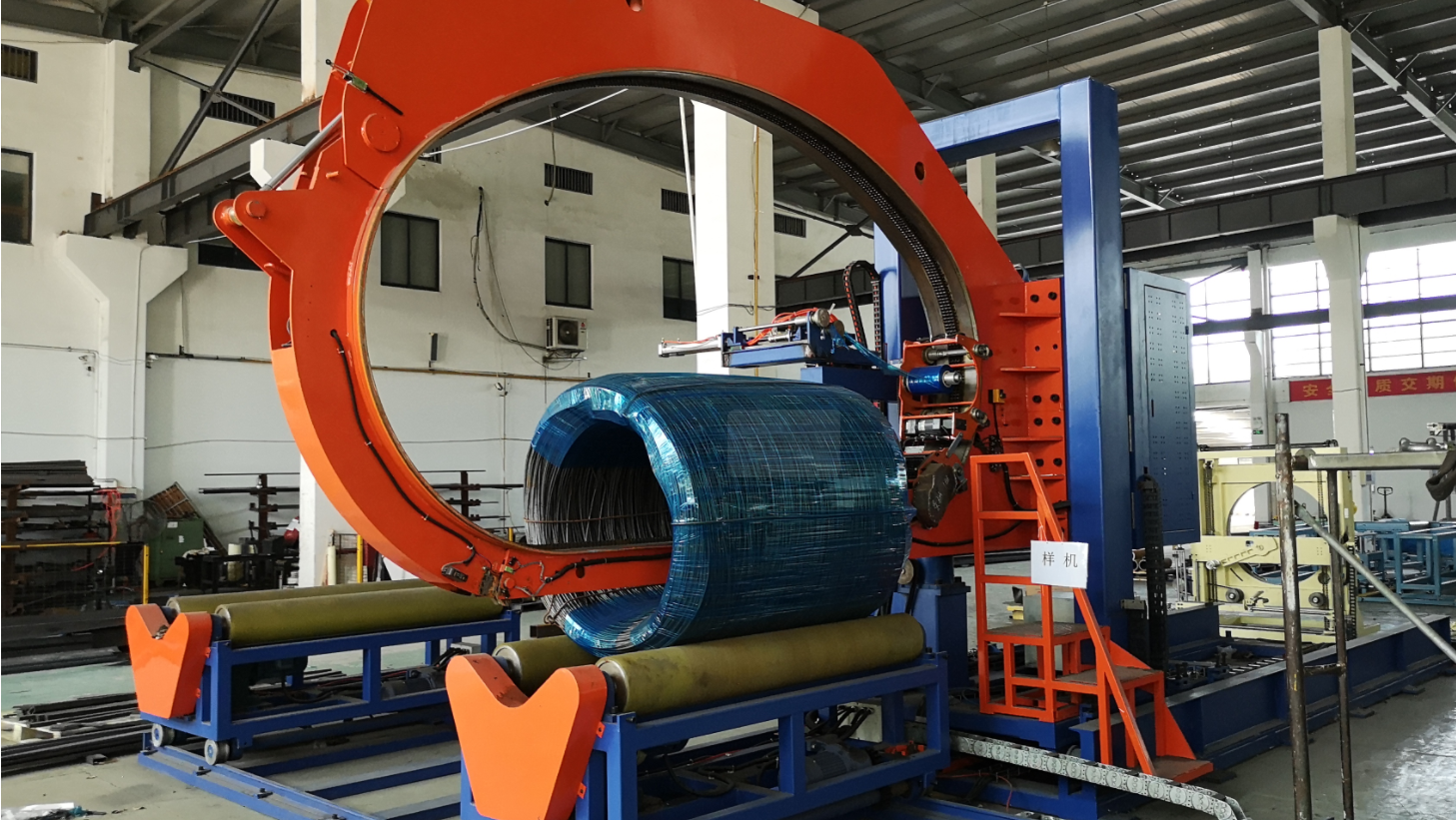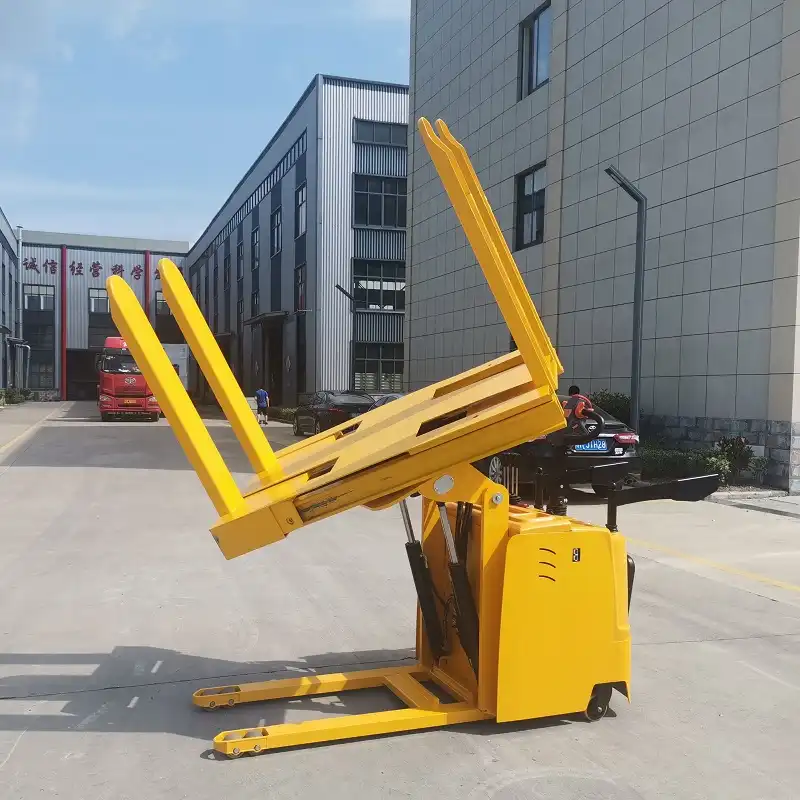Risk Management Ensuring Safety with Mold Flippers
Mold flipping machines are pivotal in modern industrial settings, significantly enhancing workplace safety by automating high-risk mold turning. This automation addresses the inherent dangers of manual handling, such as strains and accidents, transforming operations into safer, more efficient processes. Effective risk management is key to leveraging these benefits fully.
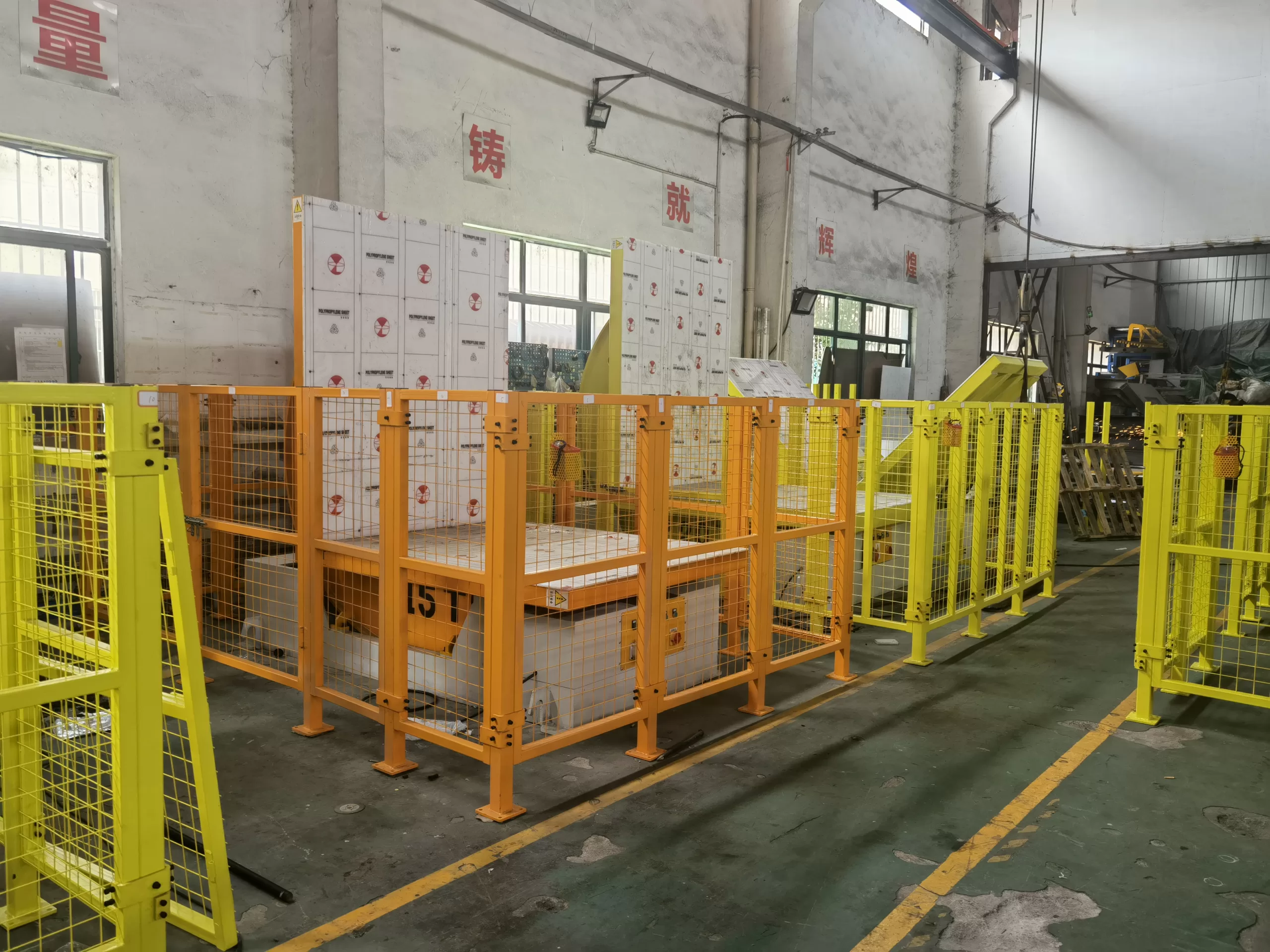
Risk management with mold flippers ensures safety by systematically identifying potential hazards in mold handling, implementing robust automated solutions to mitigate these risks, and establishing strict operational protocols. This reduces manual intervention, minimizing physical strain and human error, leading to fewer accidents and a more secure, productive industrial environment.
The transition from manual to automated mold handling is a significant step towards a safer industrial future. Mold flippers are not just about replacing labor; they represent a strategic investment in operational integrity and employee well-being. By understanding how these machines function, their safety features, and best practices for implementation, industries can unlock new levels of safety and efficiency, crucial for competing in today’s demanding market. This article will delve into these aspects, drawing from engineering expertise, industry case studies, and safety guidelines.
1. How Does a Mold Flipping Machine Improve Operational Safety?
Mold flipping machines are transformative in enhancing operational safety within industries that rely on heavy mold handling. They automate the inherently risky process of turning molds, significantly reducing the physical demands and potential for human error associated with manual methods. This directly translates to a safer work environment.
A mold flipping machine improves operational safety by automating the hazardous 180-degree mold turning process, drastically minimizing manual lifting and the associated risks of musculoskeletal injuries, strains, and crush accidents. This automation ensures consistent, controlled handling, which not only prevents damage to expensive molds but also enhances operational uptime by reducing human error. Key mechanisms, such as hydraulic systems and automated controls, offer precise and smooth movements, eliminating the unpredictable nature of manual flips. Furthermore, features like load monitoring and emergency stops act as critical safeguards. The integration of such machines, as highlighted in various industry reports and case studies like 3M’s experience with Die-Sep systems, demonstrates a clear reduction in workplace incidents and an increase in overall productivity by freeing up personnel for higher-value, less physically demanding tasks. This shift is a core component of modern industrial safety protocols.
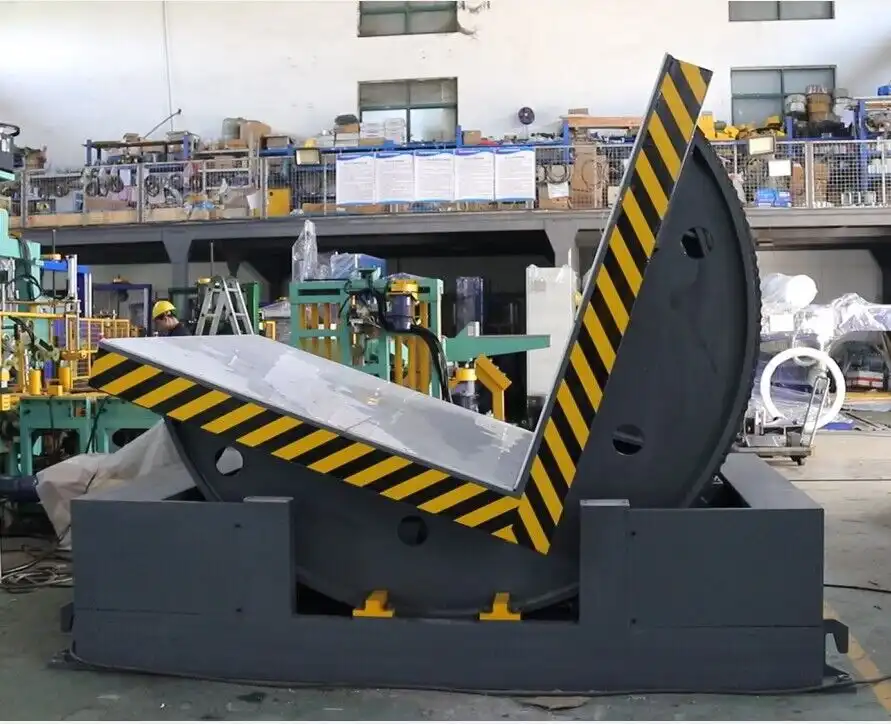
Delving Deeper: The Mechanics and Proven Benefits of Automated Mold Flipping
The journey to a safer workplace often involves embracing technological advancements. Mold flipping machines stand out as a prime example of how automation can directly address and mitigate long-standing operational hazards. The shift from manual, often precarious, mold handling to a controlled, mechanized process is not merely an upgrade in equipment but a fundamental change in safety philosophy.
The Core Problem: Risks of Manual Mold Handling
Manual mold handling, especially for large and heavy molds, is fraught with risks. As a seasoned engineer might attest, and as documented in numerous occupational safety reports, these risks include:
- Musculoskeletal Injuries (MSIs): Strains, sprains, and chronic back problems from lifting, pushing, and pulling heavy molds.
- Crush Injuries: Hands, feet, or other body parts getting caught between the mold and other surfaces during manual turning.
- Impact Injuries: Molds slipping or falling during manual maneuvers.
- Operational Disruptions: Accidents lead to downtime, investigations, and potential worker compensation claims.
- Mold Damage: Inconsistent manual handling can lead to accidental damage to valuable molds, affecting production schedules and incurring replacement costs.
The experience of companies like 3M at their New Ulm plant, prior to adopting automated solutions, highlights these challenges. Their team struggled with prying open heavy molds, a process that was not only inefficient but also a clear safety hazard, potentially leading to severe injuries and damage to mold components like leader pins and bushings.
The Solution: Automated Precision and Control
Mold flipping machines address these risks through several key engineering principles and components, often protected by patents and refined through extensive research and development:
- Automated Controls: PLCs (Programmable Logic Controllers) and HMIs (Human-Machine Interfaces) allow for precise programming of the flipping angle (commonly 90 or 180 degrees), speed, and motion. This reduces human error, a significant factor in manual handling accidents. The operator can manage the process from a safe distance, often with just the touch of a button.
- Hydraulic or Mechanical Systems: Robust hydraulic cylinders or powerful mechanical drives provide the necessary force for smooth, stable, and effortless flipping action. These systems are designed to handle specific load capacities, ensuring that even very heavy molds are turned without jerking or instability. For instance, the SXKH Hydraulic Mold Flipper emphasizes its hydraulic cylinder-driven operation for safe and stable mold flipping.
- Structural Integrity: Built from high-strength steel, the upper and lower sections of a mold flipper provide a stable platform, securely holding the mold during rotation. Designs like O-type and C-type bundle turnovers cater to different material handling needs, showcasing specialized engineering for various loads.
- Reduced Manpower: What once required multiple workers, as seen in the 3M example where three individuals struggled with a single mold, can often be accomplished by a single operator managing the machine. This not only enhances safety by minimizing the number of people in the immediate vicinity of the moving mold but also frees up valuable human resources.
Quantifiable Benefits and Industry Validation
The adoption of mold flipping machines brings tangible benefits, as evidenced by industry practices and case studies.
| Benefit Category | Manual Handling Drawbacks | Mold Flipper Advantages | Supporting Evidence/Source |
|---|---|---|---|
| Injury Reduction | High incidence of MSIs, crush, and impact injuries. | Drastic reduction in physical strain and direct hazard exposure. | OSHA reports on manual handling, 3M’s pre-automation concerns |
| Operational Efficiency | Time-consuming, labor-intensive, potential for errors. | Faster cycle times, consistent handling, reduced human error. | SXKH claims "Fast & Convenient Overturning Process" |
| Mold Protection | Risk of damage from inconsistent handling, drops, binding. | Gentle, controlled movement prevents damage to molds. | 3M’s experience with premature wear on alignment components |
| Labor Optimization | Multiple personnel required for heavy molds. | Often manageable by a single operator. | 3M: "It now takes just one person, instead of three" |
| Downtime Reduction | Accidents and mold damage lead to production halts. | Increased uptime due to fewer incidents and reliable operation. | General manufacturing efficiency principles |
The Die-Sep Mold Separator, while distinct from a flipper, shares the principle of automating a hazardous mold handling task (separation). Youngblom from 3M noted that the Die-Sep "doesn’t have enough power to damage a tool when opening or closing it," indicating a built-in safety and protection mechanism. This concept of controlled force is equally applicable to high-quality mold flippers, where hydraulic pressures or motor torque are carefully calibrated.
Furthermore, research into ergonomic interventions in manufacturing consistently points to automation of heavy lifting and awkward postures as a primary method for reducing workplace injuries. Mold flippers are a direct application of this research, engineered to take the "man" out of "manual handling" for one of the most cumbersome tasks in mold-dependent industries.
2. What Are the Key Safety Features of Modern Mold Flippers?
Modern mold flippers are engineered with a strong emphasis on safety, incorporating multiple features to protect operators and equipment. These features are a direct result of industry regulations, advanced engineering research, and a commitment to minimizing workplace accidents associated with heavy mold handling.
Key safety features of modern mold flippers include robust emergency stop buttons for immediate operation halt, physical safety barriers or light curtains to prevent unauthorized access during operation, and advanced load sensors to detect overloads and ensure stability. Interlocking systems prevent machine activation if guards are open, while visual and audible signal lights indicate machine status, enhancing situational awareness for all personnel.
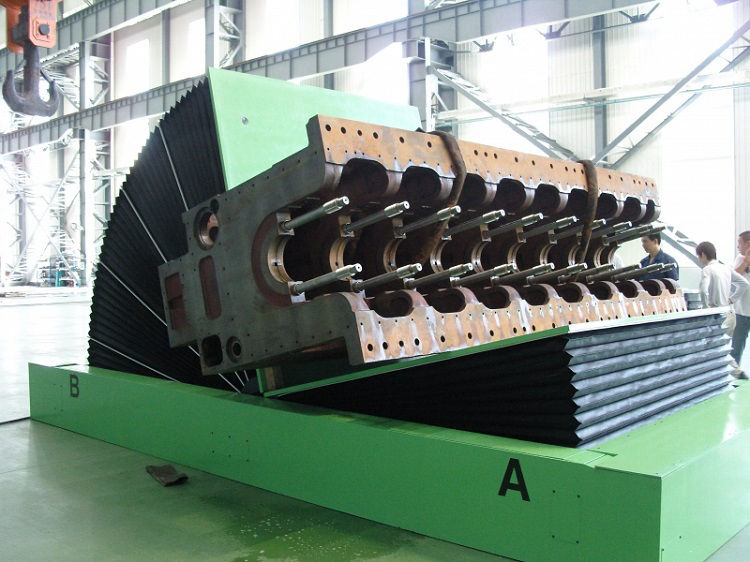
An In-Depth Look at Advanced Safety Mechanisms in Mold Flipping Technology
The evolution of mold flipping machines has been significantly driven by the need for enhanced safety. What were once relatively basic mechanical aids have transformed into sophisticated systems incorporating multiple layers of protection. This progress is often underpinned by patented technologies and a deep understanding of potential failure modes and human-machine interaction.
Foundational Safety Components: The First Line of Defense
The provided materials highlight several crucial safety features that are becoming standard in modern mold flippers:
-
Emergency Stop Buttons (E-Stops):
- Function: Strategically placed, easily accessible buttons that, when pressed, immediately halt all machine movement. This is critical in any emergency situation, allowing operators or bystanders to stop the machine if a hazard is perceived.
- Technical Detail: E-stops are typically hardwired to override other controls, directly cutting power to motors or de-energizing hydraulic valves. Their design and placement are often governed by standards like ISO 13850.
-
Safety Barriers/Guarding:
- Function: Physical barriers (fences, fixed guards) or presence-sensing devices (light curtains, safety mats) that prevent personnel from entering the machine’s operational envelope while it’s active.
- Technical Detail: Physical barriers create an impassable perimeter. Light curtains, a more advanced solution, emit infrared beams; if broken by an object or person, they send a stop signal to the machine controller. This allows for easier access when the machine is idle but ensures protection during operation. Such systems often comply with standards like IEC 61496.
-
Load Sensors/Monitoring Systems:
- Function: These systems continuously monitor the weight and distribution of the mold. If an overload condition is detected, or if the load shifts dangerously, the machine can automatically stop or warn the operator.
- Technical Detail: Strain gauges or load cells integrated into the machine’s support structure measure the forces exerted by the mold. The control system compares these readings to pre-set safe limits. The SXKH Hydraulic Mold Flipper’s "hydraulic cylinder driven" nature implies a system capable of handling significant, controlled loads, and load monitoring would be a natural complement.
-
Interlocking Systems:
- Function: Safety interlocks are switches connected to access doors, gates, or guards. If a guard is opened or removed, the interlock sends a signal to the control system to stop the machine or prevent it from starting.
- Technical Detail: These can be mechanical, electrical, or even non-contact magnetic switches. They ensure that the machine cannot operate in an unsafe state (e.g., with protective barriers compromised). This is a fundamental principle in machine safety, outlined in standards like ISO 14119.
-
Signal Lights and Audible Alarms:
- Function: Visual (e.g., flashing beacons, status lights) and audible alarms provide clear indications of the machine’s operational state (e.g., power on, in motion, fault condition).
- Technical Detail: Multi-color light towers (e.g., red for fault, yellow for warning/standby, green for normal operation) are common. Alarms may sound before movement commences to alert nearby personnel.
Advanced and Patented Safety Innovations
Beyond these foundational elements, ongoing research and development, often leading to patented innovations, contribute to even safer mold flippers:
- Smart Torque Control Systems: Particularly in electric motor-driven flippers, advanced control algorithms can monitor motor torque in real-time. If unusual resistance is encountered (e.g., a jammed component in the mold or an obstruction), the system can reduce power or stop, preventing damage to the mold or machine. This is hinted at in descriptions like "High-capacity servo drive system" and "Smart torque control system" for customized flippers.
- Redundant Safety Circuits: Critical safety functions, like E-stops and interlocks, are often designed with redundancy. This means having two or more independent channels for the safety signal. If one channel fails, the other can still perform the safety function, significantly increasing reliability. This is a core concept in functional safety standards (e.g., ISO 13849-1).
- Dual-Rail Stabilization and Automated Position Control: Mentioned for the SHJL Pack’s 5 Ton Mold Flipper, these features suggest engineering focused on enhancing the physical stability of the machine during operation and precise control over the mold’s positioning, minimizing risks associated with uncontrolled movement or tipping.
- Remote Diagnostics and Monitoring: Some modern systems may incorporate capabilities for remote diagnostics. While not a direct operational safety feature, the ability to proactively identify maintenance needs or potential faults can prevent unsafe conditions from developing.
- Hydraulic System Safeguards: For hydraulic flippers, safety features include pressure relief valves (to prevent over-pressurization), check valves (to prevent unintended descent if hydraulic pressure is lost), and hose burst protection valves. The "hydraulic system accommodated in pit" for the SXKH model also suggests a design that considers workspace safety and clear pathways.
The integration of these features transforms the mold flipper from a mere material handling device into a sophisticated safety system. Industry reports and regulatory bodies like OSHA emphasize the hierarchy of controls, where engineering controls (like these built-in safety features) are preferred over administrative controls or PPE alone. The continuous refinement of these features, driven by innovation and a deeper understanding of risk, is what makes modern mold flippers a cornerstone of risk management in mold-dependent industries.
3. How to Implement a Mold Flipping Machine in Your Workplace Safely?
Implementing a mold flipping machine safely involves a multi-faceted approach, encompassing thorough planning, comprehensive staff training, regular maintenance, and strict adherence to operational guidelines. This ensures the technology enhances, rather than introduces, safety risks in the workplace, aligning with established occupational safety programs.
To implement a mold flipping machine safely, conduct a detailed site assessment, provide comprehensive operator training covering machine specifics and emergency procedures, and establish a rigorous maintenance schedule. Ensure clear operational guidelines are followed, safety features are regularly inspected, and continuous monitoring of the process is in place to identify and mitigate any emerging risks promptly.

A Strategic Framework for Safe Mold Flipper Integration
The introduction of any new heavy machinery into a workplace requires careful planning and execution to maximize benefits while minimizing risks. The safe implementation of a mold flipping machine is no exception and aligns closely with general principles found in occupational safety guidelines, such as those detailed in the UNT DALLAS Occupational Safety Program Guidelines.
Phase 1: Pre-Installation Planning and Risk Assessment
Before the mold flipper even arrives, a thorough preparation phase is crucial.
-
Site Assessment and Hazard Identification:
- Objective: Evaluate the intended installation area for suitability and potential hazards.
- Actions:
- Ensure sufficient floor space for the machine and safe operator movement.
- Verify floor loading capacity can support the machine and the heaviest molds.
- Identify and plan for necessary utilities (electrical, hydraulic connections).
- Assess proximity to other machinery, walkways, and emergency exits. As per UNT Dallas guidelines (8.6 Emergency Egress), exits must remain unblocked.
- Conduct a specific risk assessment for mold flipping operations in this location, even if the machine has inherent safety features. This aligns with UNT Dallas Section 6.0 Risk Assessment.
-
Machine Selection and Specification Review:
- Objective: Choose a machine that meets operational needs and safety standards.
- Actions:
- Verify the machine’s capacity (e.g., 10 Ton, 20 Ton, up to 60 Ton as per examples) matches the molds to be handled.
- Confirm compliance with relevant safety standards (e.g., CE marking in Europe, ANSI standards in the US).
- Review manufacturer’s documentation on safety features and installation requirements.
Phase 2: Installation and Commissioning
Proper installation is fundamental to safe operation.
-
Professional Installation:
- Objective: Ensure the machine is installed correctly according to manufacturer specifications.
- Actions:
- Utilize qualified technicians, preferably certified by the manufacturer.
- Verify all safety interlocks, E-stops, and guarding are correctly installed and functional.
- Secure the machine to the floor if required. The SXKH model mentions the "hydraulic system accommodated in pit," which would be part of this specialized installation.
-
Initial Testing and Calibration:
- Objective: Confirm the machine operates as intended and all safety systems are active.
- Actions:
- Conduct test runs without a mold, then with test molds of varying weights (within capacity).
- Verify the functionality of all safety features (E-stops, interlocks, load sensors).
Phase 3: Operational Procedures and Training
Human factors are critical in maintaining safety.
-
Comprehensive Staff Training: (Corresponds to UNT Dallas 2.5 Education, Promotion, and Training)
- Objective: Ensure all operators and maintenance personnel are fully competent.
- Actions:
- Train on machine-specific operation, including control panel usage.
- Drill emergency procedures and the use of E-stops.
- Cover routine checks, basic maintenance, and identification of potential issues.
- Educate on the machine’s load limits and proper mold positioning.
- Document all training provided.
-
Development of Standard Operating Procedures (SOPs):
- Objective: Standardize safe work practices for using the mold flipper.
- Actions:
- Create clear, step-by-step instructions for normal operation, mold loading/unloading, and shutdown.
- Include pre-use inspection checklists.
- Define lockout/tagout (LOTO) procedures for maintenance, aligning with UNT Dallas 9.3 Lock-Out/Tag-Out.
Phase 4: Ongoing Maintenance and Monitoring
Sustained safety relies on continuous vigilance.
-
Regular Maintenance and Inspections: (Reflects UNT Dallas 3.2.1.d Administrative Control – preventive maintenance)
- Objective: Keep the machine in optimal and safe working condition.
- Actions:
- Follow the manufacturer’s recommended maintenance schedule.
- Conduct regular inspections of safety features, hydraulic systems, electrical components, and structural integrity.
- Maintain detailed maintenance logs. The "UNT Dallas Occupational Safety Program Guidelines" emphasize record-keeping (e.g., 5.4.3 Record Keeping for incidents, applicable to maintenance too).
-
Continuous Monitoring and Safety Audits:
- Objective: Proactively identify and address any evolving hazards or non-compliance.
- Actions:
- Supervisors should periodically observe operations to ensure adherence to SOPs.
- Conduct regular safety audits of the mold flipping area.
- Encourage hazard reporting from employees (UNT Dallas 3.3 Hazard Reporting).
The following table summarizes key implementation steps adapted from the provided materials and general safety principles:
| Step | Action | Desired Result | Relevant Guideline (e.g., UNT Dallas) |
|---|---|---|---|
| 1. Risk Assessment | Identify potential hazards specific to the workplace and machine. | Comprehensive understanding of risks, mitigation strategies planned. | UNT Dallas 6.0 |
| 2. Staff Training | Educate on machine operation, safety protocols, and emergency procedures. | Competent, safety-conscious operators; informed personnel. | UNT Dallas 2.5, 7.3.8 |
| 3. SOP Development | Create clear, documented procedures for operation and maintenance. | Standardized, safe work practices; reduced human error. | UNT Dallas 3.2.1.d |
| 4. Regular Maintenance | Schedule and perform checks to ensure machine efficiency and safety. | Reduced downtime, reliable operation, early fault detection. | Manufacturer’s guide, UNT Dallas 9.2.6 |
| 5. Safety Inspections | Conduct regular audits of the machine and work area for hazards. | Minimized risks, ongoing compliance with safety standards. | UNT Dallas 2.3 Surveillance |
| 6. Adherence to Guidelines | Strictly follow manufacturer’s operational manuals and internal SOPs. | Compliance, operational integrity, and sustained efficiency. | Manufacturer’s instructions |
| 7. Continuous Monitoring | Observe operations to ensure adherence to safety standards and SOPs. | Enhanced safety culture, prompt corrective actions. | UNT Dallas 5.3.3 Managers/Supervisors |
| 8. LOTO Implementation | Establish and enforce Lockout/Tagout procedures for service/maintenance. | Prevention of accidental energization during maintenance, worker protection. | UNT Dallas 9.3, Appendix A |
By systematically addressing these phases and steps, companies can ensure that the integration of a mold flipping machine translates directly into a safer, more efficient, and compliant work environment. This proactive approach to risk management is essential for harnessing the full potential of such advanced automation.
4. The Broader Impact of Mold Flippers on Risk Management and Productivity
Mold flippers extend their influence far beyond the immediate task of turning molds; they are instrumental in a comprehensive risk management strategy and act as a catalyst for significant productivity gains across manufacturing operations. Their adoption reflects a proactive approach to occupational safety and operational excellence.
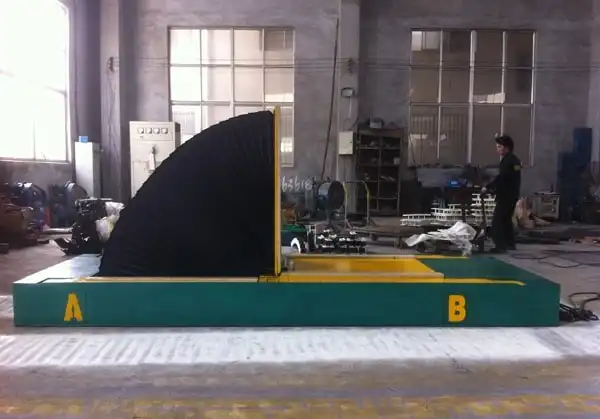
Mold flippers fundamentally reshape risk management by engineering out high-risk manual tasks, leading to fewer injuries, reduced workers’ compensation claims, and a more stable workforce. This, in turn, boosts productivity through decreased downtime from accidents, faster mold changeovers, and the ability to reallocate skilled labor to more complex, value-added activities, thereby optimizing overall plant efficiency and throughput.
Strategic Advantages: Beyond Simple Rotation
The decision to invest in a mold flipping machine, whether it’s a 10-ton unit for smaller operations or a customized 60-ton behemoth for heavy industrial applications, carries implications that ripple through an organization’s entire operational and financial performance.
Enhancing Comprehensive Risk Management Programs
Integrating mold flippers aligns perfectly with the core tenets of modern occupational safety programs, such as those outlined by UNT Dallas, which emphasize hazard elimination and engineering controls as the most effective risk mitigation strategies (UNT Dallas 3.2.1 Principles of Hazard Control).
- Hazard Elimination: The primary impact is the near elimination of hazards associated with manual mold turning. Using a crane, for example, still requires workers to guide the mold, putting them at risk if the mold falls or swings. A mold flipper rotates the mold at the touch of a button, removing personnel from the immediate danger zone.
- Reduced Secondary Risks: Fewer injuries mean less likelihood of secondary issues like staff shortages, the need for temporary replacements, and the administrative burden of incident investigation and reporting (UNT Dallas 5.0 Incident Reporting and Investigation Procedure).
- Improved Safety Culture: Visible investment in safety equipment like mold flippers demonstrates a commitment to employee well-being, fostering a stronger safety culture where workers feel valued and are more likely to adhere to safety protocols.
- Compliance and Insurance Benefits: Adherence to best safety practices, often exemplified by the use of such automated systems, can lead to better compliance with OSHA and other regulatory bodies, and potentially lower insurance premiums due to a reduced risk profile.
Driving Productivity and Efficiency
The safety benefits of mold flippers are intrinsically linked to productivity enhancements:
-
Reduced Downtime:
- Fewer Accidents: Less downtime due to injuries. The 3M case study, while focused on mold separation and leak testing, illustrates how addressing safety issues (like struggling to open molds) directly impacts productivity by preventing incidents and tool damage.
- Mold Protection: Controlled, smooth flipping prevents damage to expensive molds (leader pins, bushings, critical surfaces), avoiding costly repairs and production delays. The "gentle handling" provided by hydraulic systems or precisely controlled electric drives is key.
- Faster Changeovers: Automated flipping is significantly faster than manual methods or even crane-assisted turning. This is crucial in environments using die-cast machines or injection molding where quick mold changes are essential for minimizing machine idle time. "Die cast machines can benefit from quick change components, freeing up time for productivity."
-
Labor Optimization:
- As the 3M New Ulm plant experienced with their Die-Sep mold separator, tasks that previously required multiple workers can often be handled by one. This "frees up manpower for more intricate processes where human ingenuity excels," a direct quote reflecting the shift from physically demanding labor to higher-value tasks.
- This allows skilled technicians and moldmakers to focus on maintenance, repair, and quality control rather than brute-force material handling.
-
Process Consistency and Quality:
- Automated flipping ensures consistent handling every time, reducing variability that can affect mold alignment or lead to subtle damage.
- Some mold flippers, especially those integrated with die spotting presses (e.g., "50 Ton 180° Mold Flipper…integrating seamlessly with vertical die spotting equipment"), play a role in the precision required for mold maintenance and assembly, contributing to final product quality.
-
Versatility for Diverse Applications:
The variety of mold flipper designs—O-Type and C-Type for bundles/plates, and dedicated mold flippers with capacities from 5 to 60+ tons (e.g., "50 Ton 180° Mold Flipper (Customized)", "20 Ton 180° Mold Flipper", "10 Ton Mold Flipper")—demonstrates their adaptability.- Structure: The general structure (upper section for stability, lower section for support and adjustability, flipping mechanism as the core, and control system for intelligence) is common, but tailored to specific needs.
- Applications: Used across automotive, electronics, machinery, and aerospace, each industry benefits from safer and more efficient mold handling specific to their mold sizes and process requirements. For instance, 90-degree flipping is "ideal for horizontal mold maintenance" in injection molding and die casting (SXKH Hydraulic Mold Flipper).
The "user-friendly interface" and "quick training" mentioned for some machines further lower the barrier to adoption and accelerate the realization of these productivity benefits. Ultimately, the mold flipper is not just a piece of equipment but a strategic asset that enhances safety, optimizes resource allocation, and improves the overall efficiency and competitiveness of manufacturing operations. Its impact is a testament to how targeted automation can solve critical operational challenges.
Conclusion
Integrating mold flipping machines is a decisive step towards superior risk management and enhanced operational safety in industries reliant on mold handling. These machines directly address the significant physical hazards of manual processes by automating the turning of heavy molds, drastically reducing the incidence of workplace injuries and protecting valuable tooling. Features like automated controls, robust hydraulic or mechanical systems, and comprehensive safety interlocks form a multi-layered defense against accidents.
The benefits extend beyond immediate safety improvements; mold flippers contribute to increased productivity through faster cycle times, reduced downtime, and optimized labor allocation. By embracing this technology, and implementing it with thorough training and regular maintenance, businesses not only comply with stringent safety standards but also foster a more secure, efficient, and competitive production environment, paving the way for future-ready manufacturing.


